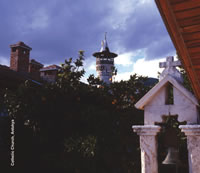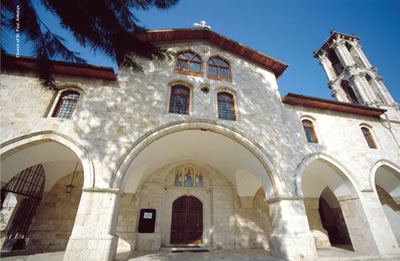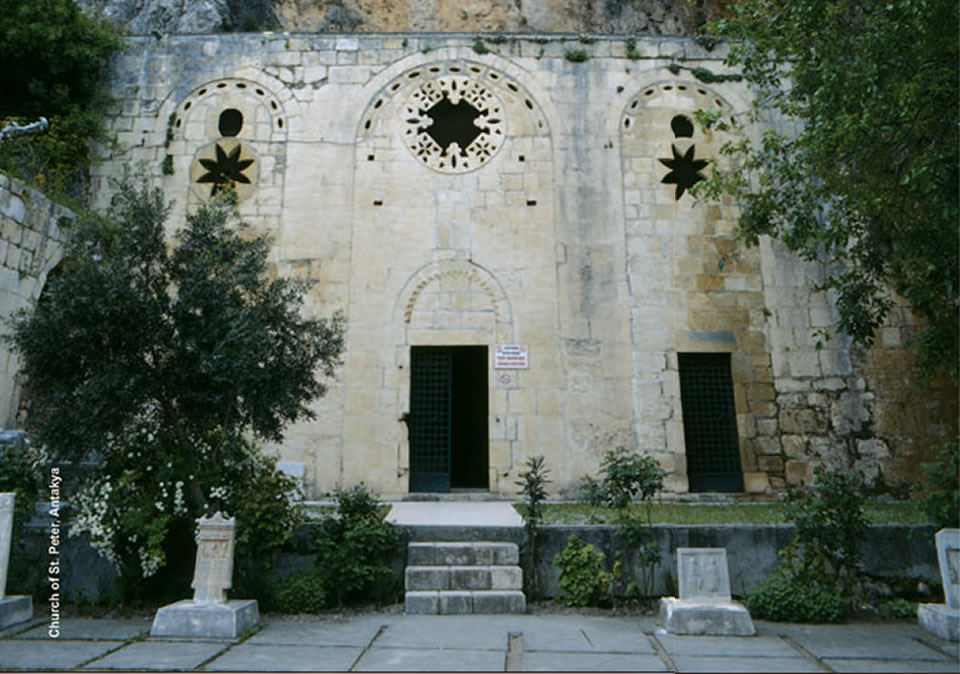St. Paul in Antakya
The name Antakya is derived from Antiochus, the father of Seleucus I, who was a contemporary of Alexander the Great. Because of its strategic importance and its position at the crossroads of Anatolia and the Middle East it has been host to many civilisations. After Rome, Alexandria and Ephesus, Antakya was the fourth largest city in the Roman Empire and because of its strategic significance and the fact that new trends reached it quickly it became most important as a religious centre. One of the most interesting things here is that, although it was home to different religions it never saw any conflict between them. Nowadays believers in three different religions with their places of worship, synagogues, churches and mosques and even final places of rest, namely graves, can be seen next to each other demonstrating that a tradition of religious tolerance dating back thousands of years still survives. Maybe this tolerance and brotherly love was the reason that St. Paul and the believers chose Antakya. From the aspect of St. Paul and the Christian religion Antakya is an important site. There were already believers here in the 1st C.A.D., with teachers who taught how to worship communally, people who fasted and disciples. Antakya, one of the first places from where Christian teaching spread, also became the starting point for St. Paul's journeys.
A short time after having converted to Christianity St. Paul and St. Barnabas, sharing similar beliefs, fasted and worshipped together in Antakya where they were visited by the Holy Spirit who instructed them that their mission was to spread the name of Jesus Christ. This was the beginning of St. Paul's many years of travelling. SS. Paul and Barnabas travelled from here in 46 A.D., by boarding a ship from Samandağ (Seleucia Peria) at Antakya and going to Cyprus. When God decided that their first mission was finished it was to Antakva that they returned. This first journey, which started from Antakya and saw them visiting Cyprus and the southern coast of Turkey, preaching, performing miracles and the like before returning to Antakya, was summarised by St. Paul to his students here. To assert that the difficulties he encountered en route did not discourage but encourage him he said to them "For Gods kingdom, you have to stiffer a few trials". St. Paul visited the students again after his second journey before travelling to Galatia and Phrygia and again ended up back in Antakya.
It was in Antakya, where you can see signs of the different religions and cultures, that the world's first church can be found, along with the Monastery of St. Simon. Antakya is of major importance for Christianity, and it is known as a major destination for pilgrims. After Jerusalem it is Christianity's most holy site, and in the 7th C. it was recognised as the seat of on of 5 Patriarchs.
Church of St. Peter

The Church of St. Peter in the northeast of Antakya, as well as being the oldest church in the world, is also where the Christian congregation met and is where St. Peter and St. Barnabas prayed alongside St. Paul. After the death of Jesus Christ the apostle St. Peter was regarded as the head of the church, he came to Antakya and the first religious meeting was held in this cave. For the first time in history, the name Christian was used here for the congregation of this church.
For this reason it is a very important place with respect to the history of Christianity.
The church was constructed in front of a small cave which is 7 m high, 13.5 m long and has a breadth of 9.5 m. The name of the mountain where the cave is located is Mt. Stauris (Mt. Hac, lit. pilgrimage). On the floor of the church, there are the remains of mosaics dating from the 5th C. A.D. There is a tunnel to the left of the altar and it is assumed that this was to facilitate the escape of Christians in times of persecution.
The church was extended by several metres in the 11 th C. by the crusaders. In 1863 Pope Pius IX, giving special importance to this church, had it renovated with the help of Napoleon III. In 1963 Pope Paul IV confirmed it as a place of pilgrimage for Christians. Every year on the 29th June there is a religious ceremony in the church attended by religous members of the chrisian congregation coming from various places.
Samandag
The Monastery of St. Simon (Simeon) is constructed on the highest peak of Samandag (lit. Mt. Saman) in remembrance of St. Simon who patiently, stubbornly and firmly spent long years living on top of a 13 m tall column. The name Samandag is derived from the Arabic of Simon, Sam, thus the name means literally Simon's Mountain. The churches of the monastery and various edifices were carved out of rock in some places and built of cut stone in others by the people from Seleucia beholden to St. Simon whilst he was still alive. In the middle of the courtyard it is possible to see the column on top of which St. Simon lived for 45 years.
The region to the south of the Amanos Mountains in the borders of Antakya has been an important religious centre since Christianity's earliest times. As well as the many remains of churches in the region that have survived to the present day it is also possible to see, although they are difficult to reach, hermits -' caves in the rocks.
Antakya is not important for Christians in terms of religious history. According to some beliefs, Iskdederun is the place where the Prophet Jonah emerged from the gut of a large fish. The place where this occurred is marked by the Jonah column which was also the part of the entrance gate tu the city.

Pilgrimage
RELIGIOUS
- The First Journey of St.Paul
(46-48 A.D.) - The Second Journey of St.Paul
(49-52 A.D.) - The Third Journey of St.Paul
(53-57 A.D.) - The Fourth Journey of St. Paul
(58-64 A.D.)s - St Paul in Mersin
Mut, Tarsus, Silifke - St Paul in Antakya
Antioche, Samandag - St Paul in Perge
- St Paul in Yalvaç
- St Paul in Konya
- St Paul in Hatunsaray And Derbe
- St Paul in Ephesus
- St Paul in Canakkale
- St Paul in Demre
- Cappadocia
- Turkish Coast
- Did you know
